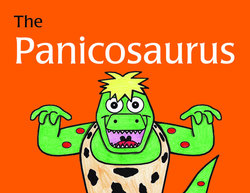Читать книгу The Panicosaurus - Kay Al-Ghani - Страница 10
На сайте Литреса книга снята с продажи.
Оглавлениеequate certain situations with strong emotions. This could be a fear of the dark, of dogs or of the dentist, for example. Left unchecked, this fear can become overwhelming and it is often difficult to persuade an individual that there is no real danger, especially when the body is subconsciously telling them that there is.
Most young children, no matter how much we try to protect them, will experience some moments of fear and anxiety. For overly anxious children, however, it is important that we teach them to recognise, and therefore reduce, the uncomfortable symptoms they may be feeling at these times. These children need opportunities to practise calming techniques at times when they are least stressed. By giving them automatic and positive responses to use when a situation becomes frightening or overwhelming, we are arming them with key tools to use throughout life.
A proactive approach involves teaching children strategies that will help them learn how to control feelings of panic through relaxation and visualisation. If, by using these methods, we can reduce anxiety and lead the child to a more peaceful place, we will have succeeded in giving them some control over their fears. If we can also induce gentle laughter – that most exquisite of mental releases, peculiar to humans – it will be an added bonus. It is thought that the first human laughter may have started as a gesture of shared relief at the passing of danger. The relaxation that results from smiles and genuine laughter inhibits the fight-or-flight response and so is a valuable tool to help to control anxiety, especially in children, although it should never be forced. Interestingly, in some children with autism uncontrollable laughter may actually be a sign of acute anxiety.
For children with autism spectrum disorder (ASD), anxiety is something they may have to struggle with on a daily basis. Children with autism, especially those with Asperger syndrome, seem to worry excessively about everyday events that typical children would normally take in
